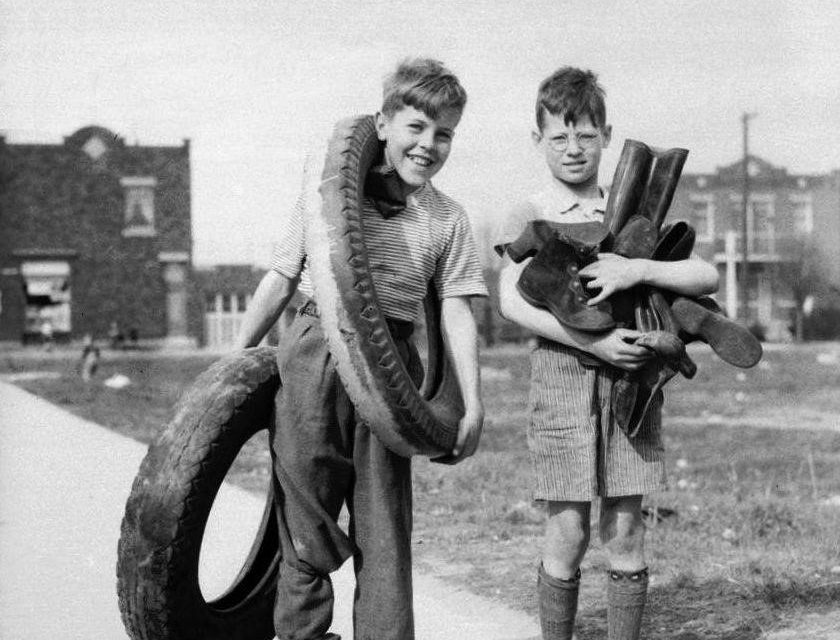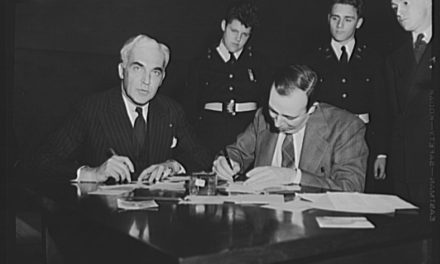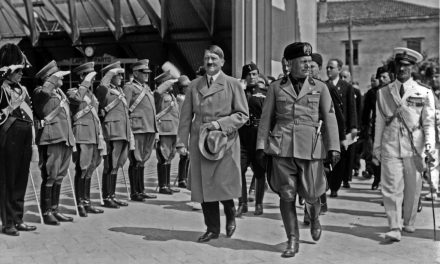Many families have had to kiss their cars goodbye during the war – or at least their tires.
This is something American citizens are not accustomed to, as rubber imports from the Dutch East Indies easily met the high demanded for the product before the war.
“Then the Indian jungles filled up with little yellow men full of rice and evil intentions,” said Fred DeArmond, a writer for Nation’s Business Magazine, invoking common stereotypes about the Japanese. “Tires immediately became everyone’s concern.”
Japan’s conquest of the Dutch East Indies early this year took away the U.S.’s rubber supply at a time when it needed rubber the most. Consumption of old tires, worn-out hot water bottles, discarded inner tubes and a number of other scrap items used to make reclaimed rubber has risen to a record high. Recycled rubber is the only substitute this country currently has for production of war and civilian items – civilian items obviously being less prioritized.

Children collecting rubber to help in the war effort. From Wikimedia Commons.
The rubber shortage is so intense that the War Production Board ordered a halt on most vehicles used by civilians until monthly factory quotas for production have been met. Production of buses and other vehicles designed for public transformation can continue until April 30 to complete companies’ February quotas for production. Once production on these vehicles has halted, that rubber will be directed toward producing army vehicles and supplies. Production of rubber for personal automobiles has stopped almost completely.
The American citizen is going to have to depend on public transportation during the war.
The Transportation Department of the National Chamber of Commerce, in a recent study, found that buses and railways saw a 20 percent increase in passenger traffic from 1941 to 1942. That equates to 30 million more passengers taking public transportation.
Yet despite the clear and ever-increasing need for alternatives to private automobiles, 2,320 American cities and towns (with a combined population of 12.5 million) have no form of public transportation. The rubber shortage is a huge problem for those citizens.
Modern science offers one potential solution. A bill was introduced to Congress by Senator Murray of Montana and Representative Beiter of New York on April 9 that would begin production of 400,000 tons of synthetic rubber a year, calling the current rubber production system “inadequate.”
“Military needs of our country no longer permit us to trifle with our rubber supply,” Murray said. “More gravely threatened than we have ever been before in our national life, we cannot afford to let our military machine run down for want of essential rubber.”
It may be difficult for synthetic rubber production to increase dramatically even if Congress passes this bill. For the time being, however, the U.S. will continue to rely on the current “inadequate” system.
*****
The rubber shortage has put a lot of pressure on citizens who once depended on personal automobiles to commute. Many have needed to relocate to urban areas to be closer to work and the vehicles that can take them there.
Cross-country moves to homes and apartments closer to factories have seen a 50 percent increase, according to the Institute of Real Estate Management, putting a new life into the real estate market.
Factories are being built closer and closer to cities where the workers a migrating, trying to lessen the strain that the rubber shortage has put on commuters. An extra demand for apartment space is beginning to take place, yet this new shift towards a need for homes close to public transportation has hurt the market for many suburban houses.
Cities like New York, Boston, Washington D.C., Detroit, Philadelphia, Cleveland, St. Louis, San Francisco and Chicago have seen a boom in apartment rentals. Property owners began to take advantage, increasing rents to capitalize on the influx of people. However, government agencies put a stop to this as soon as they caught wind.
The Office of Price Administrations (OPA) ordered that the rents of two-thirds of the families renting apartments be frozen, soothing the fear of thousands who thought they would become the victims of an upward spiral of rents that had begun to disturb many people throughout the country.
The regulation states that those moving to a new home would not be charged a higher rent than the previous occupants.
More than 700 real estate men were told by government officials at the National Conference on Rent Control in Chicago that fixing maximum rent limits would enhance war production, improve civilian morale and aid the maintenance of peaceful labor relations. Many of the real estate heads seems to be understanding.
Gustave Ross, vice president of Brown, Wheelock, Harris, Stevens Inc. said his company would be “glad to rent at existing levels the apartments now available.”
The Brooklyn Real Estate Board stated that the rent control regulation was not unexpected in the borough because Brooklyn had previously been designated as a defense zone. In Brooklyn, more than 600,000 will be affected by the regulation.
Karl Borders, director of the OPA rent division, explained to the real estate men that the price and rent control act is designed to meet a wartime emergency and must be made effective quickly, swiftly and uniformly.
Sources:
“OPA ORDER IS SEEN AIDING REAL ESTATE.” New York Times, Apr 29 1942, p. 37. http://search.proquest.com/docview/106154914?accountid=13793.
“Cross-Country Moving shows 50% Increase.” The Washington Post, Apr 19 1942, p. 1. http://search.proquest.com/docview/151502572?accountid=13793.
“FREEZING OF RENTS CALLED ESSENTIAL.” New York Times, Apr 30 1942, p. 33. http://search.proquest.com/docview/106395330?accountid=13793.
De ARMOND, FRED. “If we are to Keep America on Wheels.” Nation’s Business (pre-1986), vol. 30, no. 5, 05 1942, pp. 39. ProQuest Central, http://search.proquest.com/docview/231589341?accountid=13793.
“Real Estate.” Wall Street Journal, Apr 10 1942, p. 1. http://search.proquest.com/docview/131441232?accountid=13793.
“Federal Plants to make Rubber Proposed in Congress Measures.” New York Times, Apr 10 1942, p. 13. http://search.proquest.com/docview/106196682?accountid=13793.
“Heavy Truck Output for Civilian use to be Halted Soon.” Wall Street Journal, Apr 13 1942, p. 4. http://search.proquest.com/docview/131406556?accountid=13793.
BY JOHN C MCWETHY Staff Correspondent of The Wall,Street Journal. “Rubber.” Wall Street Journal, Apr 13 1942, p. 1. http://search.proquest.com/docview/131400604?accountid=13793.





